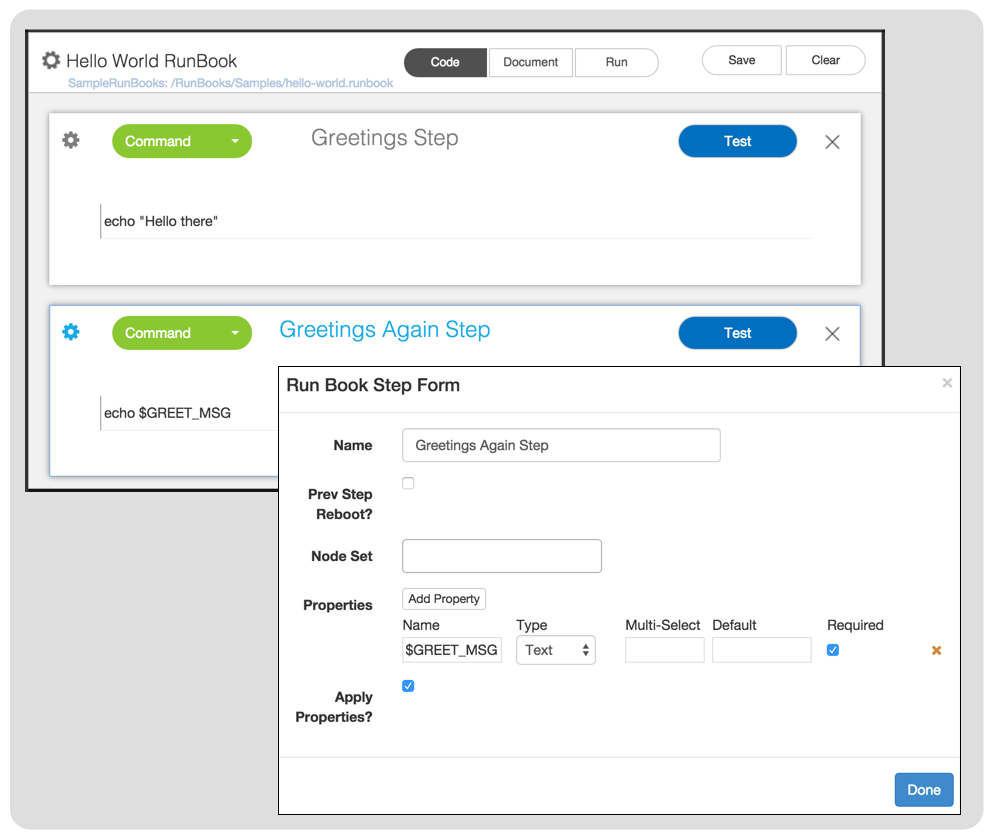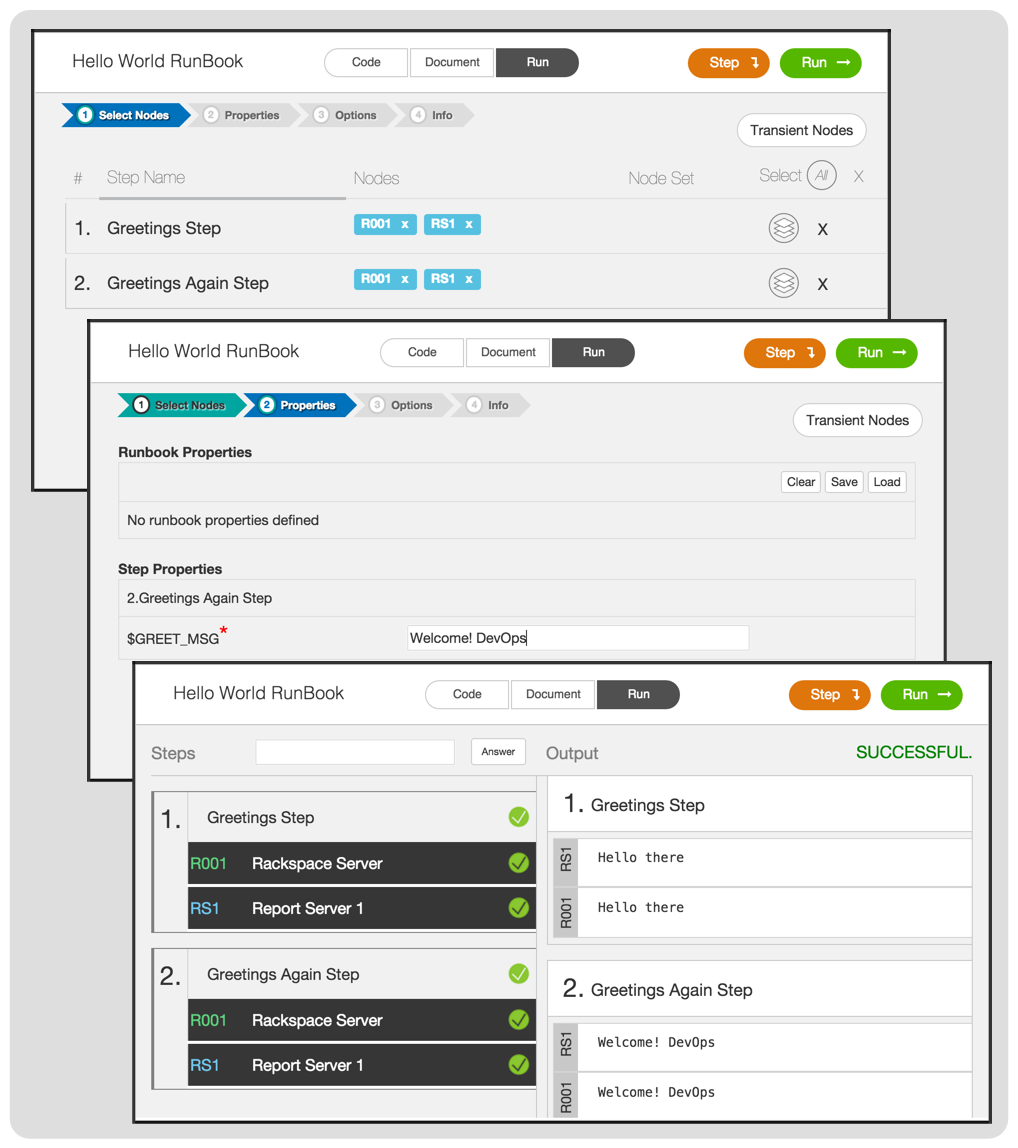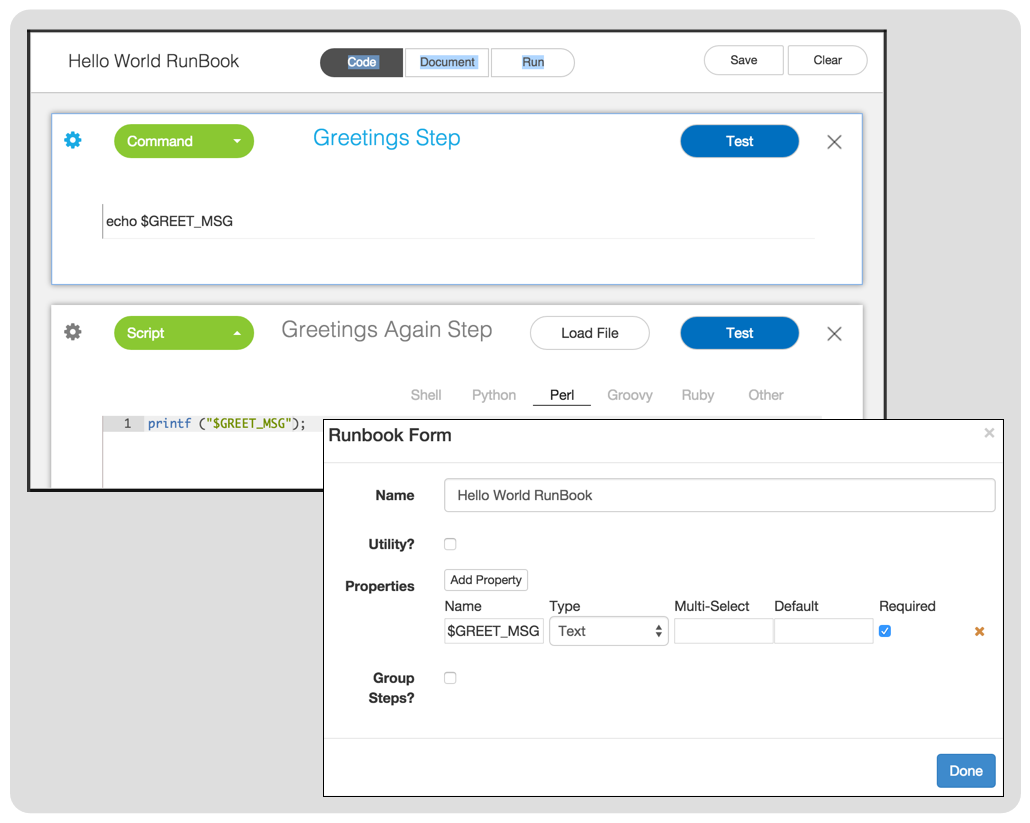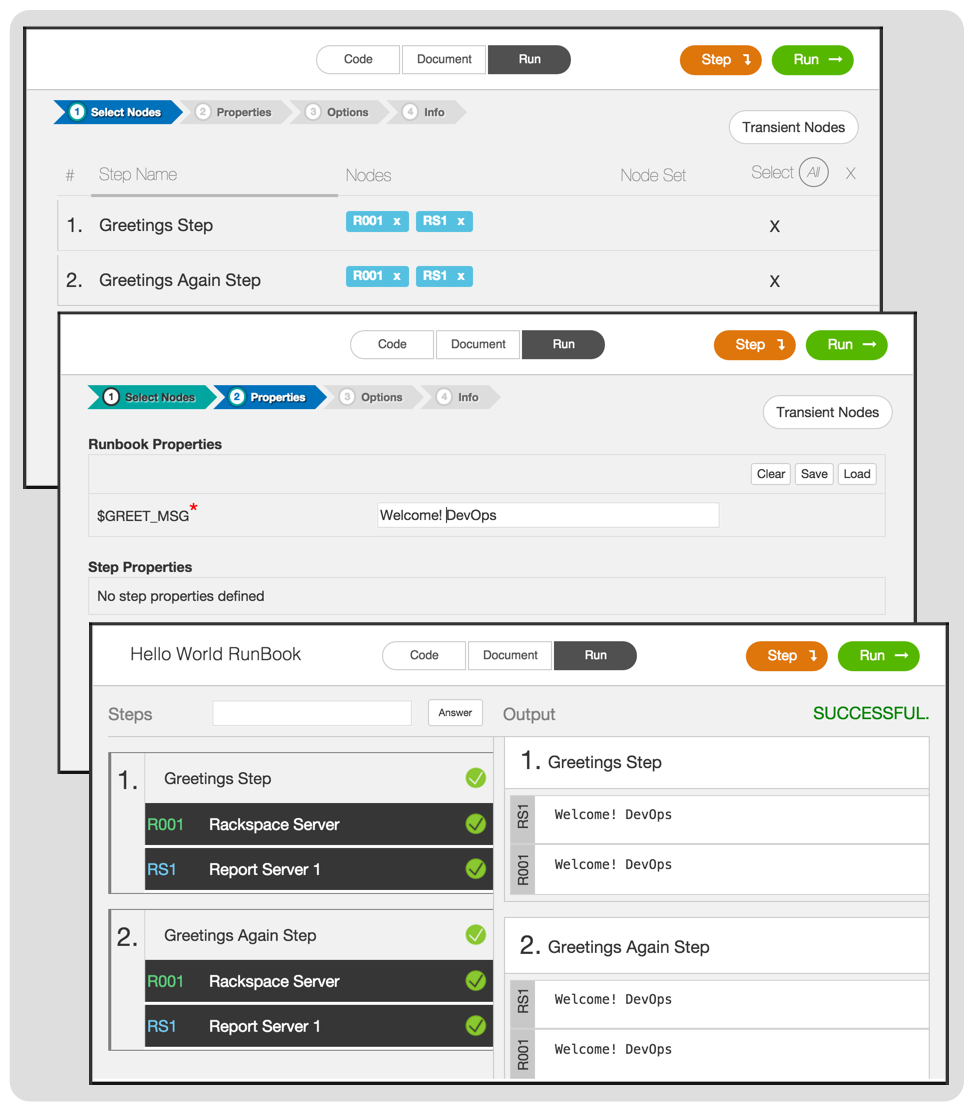RUN-BOOK AUTOMATION : BASIC GUIDE
Please make sure you have read the RunBook Orchestrator & RunBook Concepts sections, before proceeding with this sub-section.
In this section, we will get into more details about following different topics :
- Using Step Properties in RunBook
- Using Global Properties in RunBook
Using Step Properties in RunBook
There are situations, when users would like to provide values at run-time before executing the run-book. This can be achieved using Step properties. Step properties are key-value pairs, where the user can provide the value of the properties at runtime just before executing the run-book. Those values will replace the key tokens defined anywhere in the run-book.
Figure below shows a simple example of providing the greetings message at runtime when executing the run-book. In this example, we define a step property called $GREET_MSG. This property is defined & used in the run-book step 2 as shown below:

As shown in figure below, when the user executes the run-book, he/she is provided a properties form to input the value for the step property $GREET_MSG. Any reference to $GREET_MSG in that step gets replaced with the user-provided value as shown below:

Note : In the above example we used $GREET_MSG as property name. This could have been anything else like : %GREET_MSG or _GREET_MSG or just GREET_MSG.
Users could choose the name as they see fit. There is no requirement to have $ or % or any other character to be part of the property name.
Also its important to select the Apply Properties checkbox at each step level, when users define properties, otherwise the value will not get replaced for that step.
Using Global Properties in RunBook
The global properties usage is similar to the step properties as shown in the section above. Only difference is in the scope. The scope of step property is only for that step, while the scope of global property is for the whole run-book.
Figure below shows a simple example of providing the greetings message at runtime when executing the run-book. In this example, we define a global property called $GREET_MSG. This property is defined & used in the run-book step 1 & 2 as shown below:

As shown in figure below, when the user executes the run-book, he/she is provided a properties form to input the value for the global property $GREET_MSG. Any reference to $GREET_MSG in step 1 & step 2 gets replaced with the user-provided value as shown below:

Note : In the above example we used $GREET_MSG as property name. This could have been anything else like : %GREET_MSG or _GREET_MSG or just GREET_MSG.
Users could choose the name as they see fit. There is no requirement to have $ or % or any other character to be part of the property name.
Important : Remember to select the Apply Properties checkbox at each step level where the properties need to be replaced, otherwise the value will not get replaced for that step where the "Apply Properties" Checkbox is not selected.
